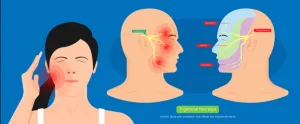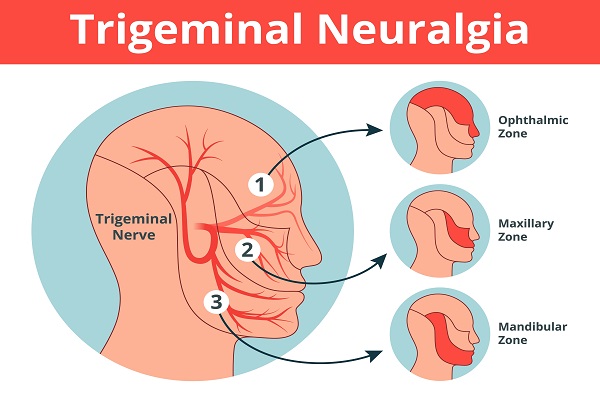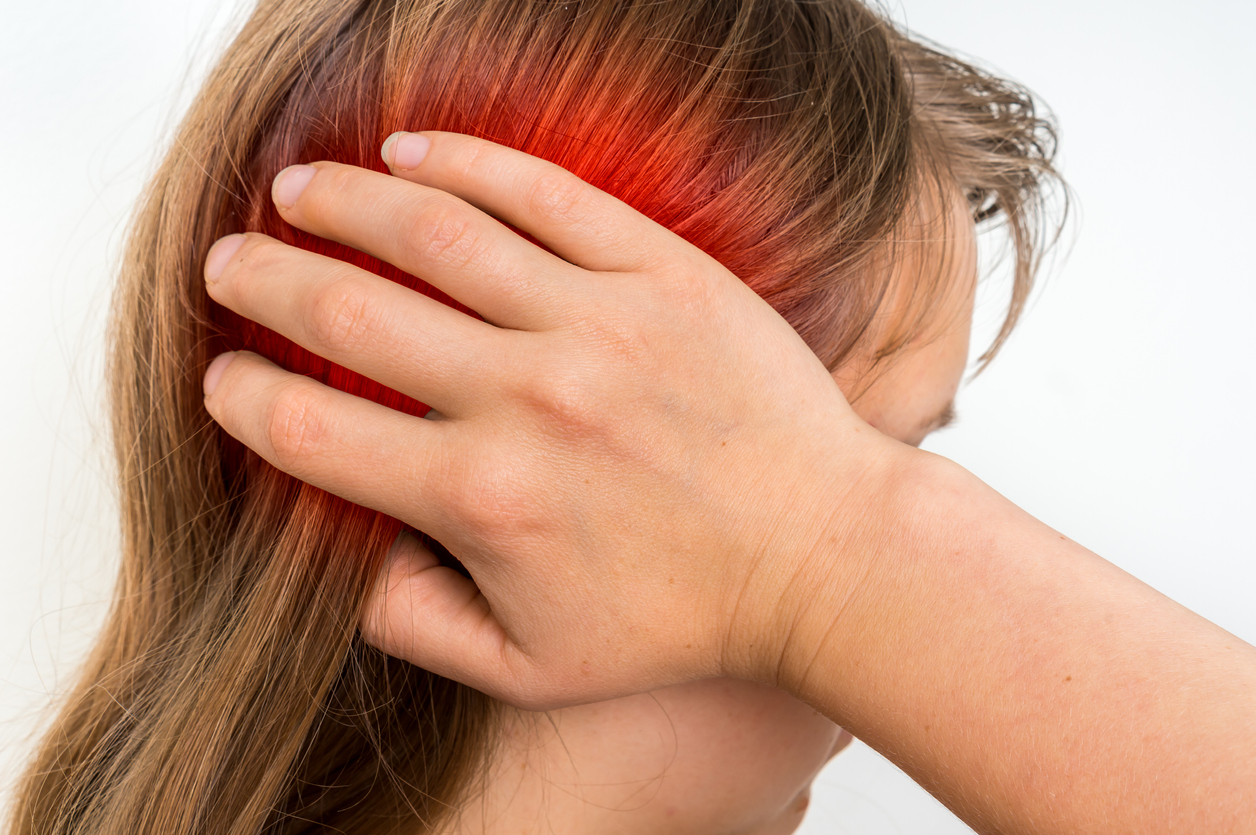What's On This Page?
Toggle“Dear Pharmacist,
I get weird head pain called “trigeminal neuralgia” and it’s related to mild Multiple Sclerosis. I need some information, please answer me I am in a lot of pain. What are the available treatments?” -J.S., Portland, Oregon
The question above came to me via my syndicated newspaper column. It’s about a very important pain syndrome.
Trigeminal neuralgia or TN causes lightning bolt shots of pain in the head that just come out of nowhere, starting near the ear and move around your head, teeth, jaw and eye. The pain is usually one-sided but it can be bilateral, especially if you have Multiple Sclerosis. People with MS are much more likely to develop trigeminal neuralgia.
In case you are wondering, I do NOT have trigeminal neuralgia or any facial neuralgia, but my husband used to experience this a long time ago.
About the Shocks

For some people, the shocks last a few seconds or a minute, then retreat until the next attack. For those who have atypical facial pain (AFP) or atypical TN, the pain varies but remains constant. It feels like someone plugged your nerves into an electrical socket and then stuck an ice pick in your eye. You must not give up, there are ways to gain control over your pain.
Make sure your doctor has thoroughly tested you. There are many treatments and procedures available that can take the pressure off the trigeminal nerve. Here is some information, and if any of you have more ideas, feel free to email me so I can pass them along.
Treatments And Procedures Available For Trigeminal Neuralgia:
1️⃣ Medication slows down the electrical firing in your brain and therefore reduces or eliminates trigeminal neuralgia pain for some people. Neurologists often use anti-epileptic drugs such as Tegretol (carbamazepine), Neurontin (gabapentin) and Dilantin (phenytoin) among others. Baclofen and Zanaflex are other considerations.
2️⃣ If you have Multiple Sclerosis, your facial neuralgias could be related to a process called demyelination, a big word for what happens when nerve cells (neurons) lose their outer coating – their ‘insulation.’ When neurons “demyelinate” a lot of weird nervous system problems results, for example, sensations of hot water pouring down your leg, or someone pulling one of your toes.

3️⃣ Certain OTC supplements may nourish neurons and may help re-insulate you. Ask your neurologist about methylcobalamin, DHA (docosahexaenoic acid, a fish oil extract), vitamin D, SAMe, NAC, progesterone, coenzyme Q10, GABA, magnesium, Methyl Guard, and Brain Sustain.
4️⃣ Run a hand towel under hot water and then lay it over your face, but leave your nose free to breathe (!) then apply pressure to each side of your face.
5️⃣ Apply capsaicin cream to your face/head where it hurts and whenever the ‘hot’ sensation is gone, reapply it…usually every 3 – 6 hours. This should numb nerve endings within a week or two.
Avoid eye area and wash hands well.
These types of creams are sold over-the-counter at pharmacies nationwide, under such brand names as “Zostrix” for example, and many store-brand generics. Many chiropractors offer a similar type of pain-relieving gel, just make sure the active ingredient is capsaicin.
6️⃣ Ice packs or hot packs, whichever feels better. Most people feel the cool sensation is best, but this is very personal.
7️⃣ In states where it is legal, cannabis (yes, marijuana) is used to control intractable, unrelenting pain. It’s called “medicinal marijuana” and you can just google that term to learn more about its use for TN, and other facial neuralgias. In states where it is not legal, a pain specialist must write a prescription for it as “Marinol” is sold in pharmacies nationwide. I wrote this article too, The Crazy History Of Medical Cannabis And 5 Potential Uses.

Marinol is not exactly marijuana, it’s a slightly warped drug version but it has a similar effect on the body. The herbal ingredients in marijuana stimulate receptors in the brain and may abort an attack within minutes. Don’t stand in judgment of this illegal drug. I’m sure many of you reading who do NOT suffer from trigeminal neuralgia can’t understand why I’ve even mentioned this substance.
For many people, this natural herb has kept them from killing themselves, because it is effective against the horrific pain. Trigeminal Neuralgia is also called “The Suicide Disease.”
8️⃣ Acupuncture helps some people, particularly with chronic pain, not so many acute episodes.
9️⃣ Get a gluten and casein antibody blood test. Removing offending allergenic foods will allow your nerves to remyelinate. This could ultimately be the cure, but it could take 3 to 6 months before the pain starts to lift where you notice it. Stick with it!
🔟 See your physician routinely for lab work, especially if you take medications. Some of the anti-seizure medications that I’ve listed above are drug muggers of B vitamins. You should read my book, Drug Muggers for more on that. Click on the tab “store” to access that.
Small Fiber Neuropathy and Trigeminal Neuralgia: 2 Neuropathic Conditions
TN is a form of cranial neuropathy that affects the trigeminal nerve, as you’ve learned, one of most widely distributed nerves in the head. It’s characterized by severe, episodic facial pain that can be triggered by everyday activities such as speaking, chewing, or touching the face.
Small fiber neuropathy (SFN) if you don’t know what that is involves damage to the small fibers of the peripheral nervous system and typically presents with pain and/or symptoms in the limbs, such as burning, tingling, or numbness.
I wrote a very comprehensive article on Small Fiber Neuropathy which many people have and don’t even realize. You can READ ABOUT SFN HERE.
Unlike TN, which specifically involves the cranial nerve and is focused primarily on the facial area, small fiber neuropathy affects the nerves of the body more broadly.
While both are forms of neuropathy, they affect different types of nerve fibers and parts of the body:
- Trigeminal Neuralgia: Affects the trigeminal nerve, causing sharp, severe facial pain.
- Small Fiber Neuropathy: Involves peripheral small nerve fibers, primarily affecting sensations in the extremities.
Both conditions are considered neuropathic pains and may share some underlying mechanisms in terms of nerve damage and response to treatment. The same medications may be used too. Both conditions can also occur due to systemic diseases such as diabetes, chronic infection, injuries or autoimmune disorders, but their specific symptoms and clinical presentations differ.
Summary
While trigeminal neuralgia, often termed ‘The Suicide Disease’ due to its severe pain, presents a formidable challenge, it’s important to remember that hope and help are within reach. Combining both conventional medications and innovative natural therapies can create a powerful regimen that may significantly reduce or manage the pain.
From pharmaceuticals that modulate the electrical activity in the brain to supplements that nourish and potentially heal nerve cells, each option offers a piece of the puzzle towards relief. Techniques like applying heat or capsaicin cream directly to the affected area can provide immediate, albeit temporary relief.
For those exploring holistic paths, acupuncture and dietary adjustments are promising avenues that address underlying issues rather than just symptoms. In regions where it is legal, medicinal marijuana has emerged as a profound source of relief for many who suffer from this intense pain.
Remember, effective management of trigeminal neuralgia often requires a personalized approach, so continuous dialogue with healthcare providers, regular monitoring, and adjustments to treatment strategies are key to finding what works best for you. Living with trigeminal neuralgia is undeniably difficult, but with the right combination of treatments, support, and perseverance, finding relief is more than just a possibility—it’s a pathway to reclaiming your quality of life.

Suzy Cohen, has been a licensed pharmacist for over 30 years and believes the best approach to chronic illness is a combination of natural medicine and conventional. She founded her own dietary supplement company specializing in custom-formulas, some of which have patents. With a special focus on functional medicine, thyroid health and drug nutrient depletion, Suzy is the author of several related books including Thyroid Healthy, Drug Muggers, Diabetes Without Drugs, and a nationally syndicated column.

